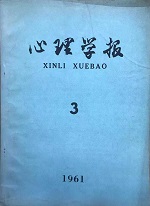|
|
SOME PSYCHOLOGICAL FACTORS IN PROMOTING THE STUDENTS' GRASP OF ARITHMETICAL KNOWLEDGE,AS FOUND IN RECENT EDUCATIONAL REFORMS
LU CHUNG-HENG, MAO YU-YIEN, YING YU-YEH, MA CHIEH-WEI, CHANG MIE-LIN
1961, 5 (3):
52-63.
We have made 33 studies in the psychology of mathematics teaching during the past three years of the Great Leap Forward. The present paper is a summing up of some of the psychological problems based on these studies.In a preliminary way, we discovered in this series of studies that, given good teaching conditions and full mobilisation of students initiative in leaning, there is ample room for latent abilities of the students to find expression. These studies prove that the old teaching material is not entirely suited to the students' abilities; at the same time they confirm the formation of reversable associations, the correctness of given prominence to images as a link and also the process of thinking from external、 material and expanded activity to inner and compressed activity. It also prove that variation and contrast are both effective methods of enhancing the quality of mathematical teaching. In addition, we found some negative elements that hinder the students form grasping mathematical knowledge——among which the relatively important elements are interlacing of figures and cut of superfluous lines in geometry. It is thus easy to create illusions in the students which result in errors; another example is, in the development of mathematical concepts, if there are contradictory things, at the perceptive level, in the formation of concepts, there will emerge the phenomenon of negative transfer.
Related Articles |
Metrics
|




